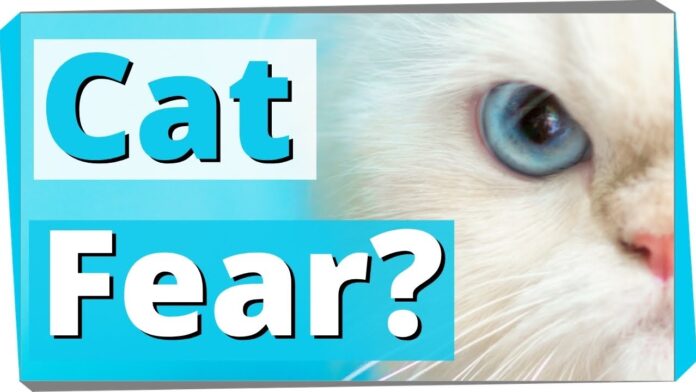Fear & Phobia from Cats or Ailurophobia (Fear of Cats) : Symptoms , Causes & Treatment
What is ailurophobia?
Ailurophobia describes an intense fear of cats that’s strong enough to cause panic and anxiety when around or thinking about cats. This specific phobia is also known as elurophobia, gatophobia, and felinophobia.
Ailurophobia (EYE-lure-oh-foh-bee-uh) — is an intense and persistent fear of cats. It’s also called:
- gatophobia
- elurophobia
- felinophobia
- cat phobia
What are the symptoms of ailurophobia?
Ailurophobia symptoms may be emotional, psychological, or physical. These symptoms might be similar to what’s experienced in an anxiety disorder or a panic attack.
Emotional or psychological symptoms of ailurophobia may include:
- intense anxiety or fear
- racing thoughts
- fear of losing control
- dread
- disgust
- insomnia
- avoidance of anyplace with cats (including the homes of friends or family members with cats)
Physical symptoms of ailurophobia may include the following:
- rapid breathing or breathlessness
- trembling
- dizziness
- confusion
- brain fog
- racing heart
- sweating
- chest pain
- nausea
- headache
What causes ailurophobia?
The exact cause of ailurophobia is unclear. The source may differ for each person and stem from various factors.
Contributing factors to ailurophobia may include:
- Genetics. Phobias and other anxiety disorders often run in families. Studies on twins have found phobias to be 30% — 40% inherited.
- Previous bad experience with cats. A person who was attacked by a cat in childhood may develop ailurophobia.
- Dysfunctional brain chemistry or circuitry. Research from 2017 suggests that anxiety disorders, such as PTSD and specific phobias, may stem from a dysfunction in brain circuitry.
- Having another anxiety disorder or other phobias. Individuals with one phobia are more likely to have another phobia.
- Having a close family member with ailurophobia. If your mom or dad has an intense fear of cats, you may have learned this fear by watching them.
How is ailurophobia diagnosed?
According to the DSM-5-TR, a diagnosis of specific phobia of any type is given if your symptoms meet the following criteria:
- Significant fear or anxiety toward a specific object (in ailurophobia, it’s cats).
- The trigger (cats) almost always leads to sudden, intense fear or anxiety.
- The fear is far more severe than the actual risk of the specific object or situation.
- Triggers (friends’ homes with cats or pet shops) are actively avoided or endured with severe anxiety.
- The phobia (fear of cats) is persistent and lasts 6 months or more.
- The phobia (fear of cats) results in clinically significant distress or impaired functioning. For example, you can no longer go home because your roommate got a new cat.
- The phobia (fear of cats) is not better explained by the symptoms of another mental disorder, such as post-traumatic stress disorder (PTSD) or obsessive-compulsive disorder (OCD).
How is ailurophobia treated?
Treatment for specific phobias may include one or more of the following techniques:
- Flooding. This technique gives you the maximum level of exposure to your trigger without any attempt to lessen the anxiety. Flooding is considered the most effective intervention for many phobias, and research shows it has a response rate of 80%-90%.
- Desensitization techniques. This treatment exposes you to a list of your triggers, starting with the least to the most anxiety-provoking. You can also learn various techniques to deal with anxiety, such as relaxation and breathing techniques.
- Eye movement desensitization and reprocessing (EMDR). EMDR treats the events in which you’ve encountered cats as unprocessed traumas. You would then work through these memories to overcome your fear of cats.
- Virtual reality (VR) therapy. You could overcome your fear by interacting with cats on a VR screen.
- Medication, including:
- beta-blockers (propranolol)
- benzodiazepines (Lorazepam)
- antidepressants
Compiled & Shared by- This paper is a compilation of groupwork provided by the
Team, LITD (Livestock Institute of Training & Development)
Image-Courtesy-Google
Reference-On Request
Disclaimer: This blog is vet-approved and includes original content which is compiled after thorough research and authenticity by our team of vets and content experts. It is always advisable to consult a veterinarian before you try any products, pet food or any kind of treatment/medicines on your pets, as each pet is unique and will respond differently.


